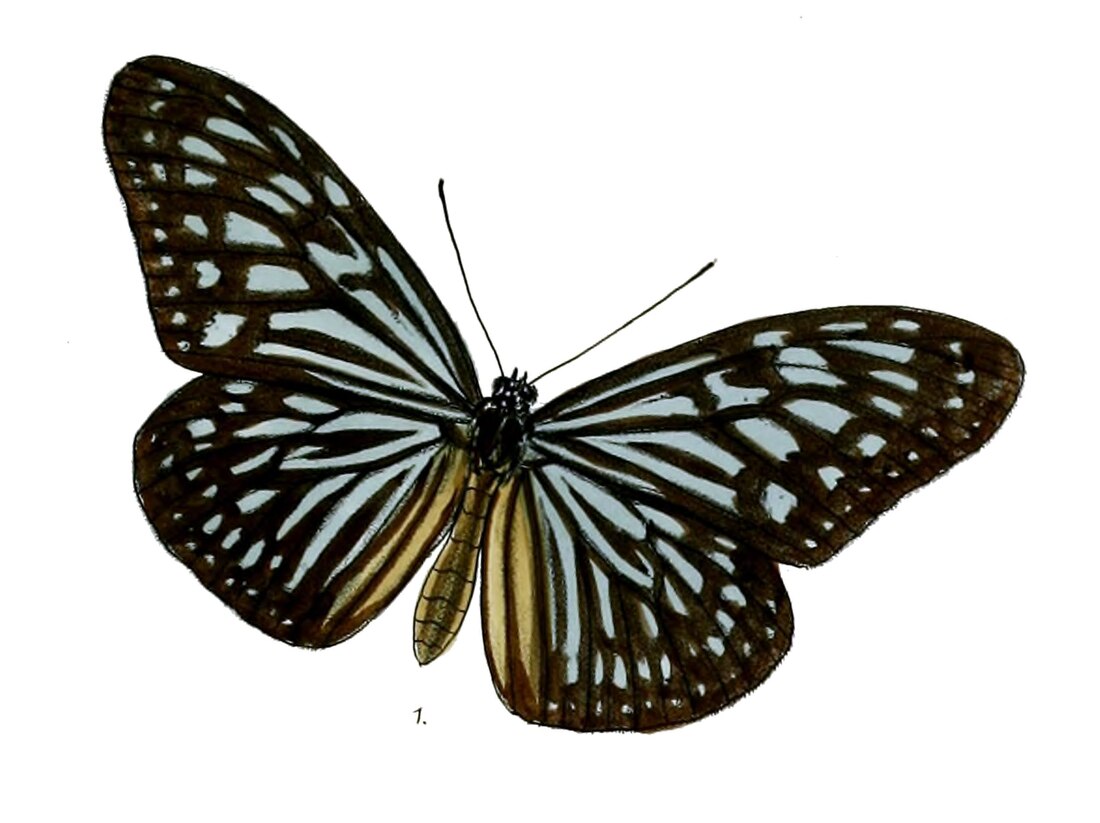Top Qs
Timeline
Chat
Perspective
Ideopsis vulgaris
Species of butterfly From Wikipedia, the free encyclopedia
Remove ads
Ideopsis vulgaris, the blue glassy tiger, is a butterfly that belongs to the crows and tigers, that is, the danaid group of the brush-footed butterflies family. In 2023, Thapa and Bhuyan published a paper recording of this species from Dehing Patkai National Park in Assam, India, marking the first documented occurrence in the state and the second record for the country.[2]
Remove ads
Subspecies
Subspecies include:[3][4]
Distribution
This species can be found in India, SriLanka, Singapore, Thailand, Laos, Vietnam, Hainan, South Burma - Sundaland, Sumatra, Java, Lesser Sunda Islands - Alor, Borneo – Palawan.[3]
Habitat
These butterflies inhabits a range of habitats, but especially occur at the edge of rainforest or plantations and in the coastal mangrove areas.[5]
Description
Summarize
Perspective
Ideopsis vulgaris has a wingspan reaching 70–80 millimetres (2.8–3.1 in).[6][7] This butterfly is quite similar to the dark glassy tiger (Parantica agleoides). A transverse black bar in the forewing cell, cutting through one of the white streaks, distinguishes the blue glassy tiger from the other one.[6] As other milkweed butterfly it is mimicked by Chilasa clytia (Papilionidae).

Upperside: black, the dorsal margin of hindwing broadly cinereous; both wings with the following subhyaline bluish-white streaks and spots.
Forewing: a short streak along dorsal margin, two broad streaks united at base in interspace 1, the upper one curved, a broad streak in cell with an outwardly indented detached spot beyond it in apex, a slender costal streak, two large discal spots inwardly pointed, outwardly truncate, three elongate spots beyond apex of cell and four or five elongate preapical spots beyond them, finally a subterminal and a terminal series of spots decreasing in size towards apex of wing.
Hindwing: elongate streaks in interspaces 1 a and 1 b, two in interspace 1, two in cell with a short slender streak-obliquely between their apices, shorter streaks radiating outwards in interspaces 2–6, a sub-terminal series of small spots and a terminal row of dots beyond.

Underside: similar, the markings better defined. Antennae black, palpi black above, bluish white below; head and thorax black, spotted with bluish white; abdomen brown above, sullied white below. Male without any special sex-marks on the wings.[8]
Race exprompta, Butler (Sri Lanka). Closely resembles D. vulgaris Butler, but has all the markings much broader, the apical spot in cell of forewing outwardly less emarginate; on the hindwing interspaces 1 a and 1 b are entirely filled with the white streak, while the short slender streak lying between the apices of the streaks in the cell coalesces with the lower one.
Race nicobarica, W.-M. & de N. (Nicobar Islands). Like the preceding race, but the subhyaline markings still broader and somewhat blurred. Upperside: forewing: the whole basal two-thirds of interspace 1 bluish white, enclosing a fine longitudinal black line; streak in discoidal cell vary broad, occasionally produced to the apical spot in the cell. Hindwing: the black in interspace 1 reduced to a mere streak; cell entirely bluish white, traversed longitudinally by a faint black forked line. In the solitary specimen of the male in the collection of the British Museum this line is entirelyabsent.
Remove ads
Similar species
- Blue tiger (Tirumala limniace)
- Dark glassy tiger (Parantica agleoides) [6]
Biology
Adults can be found all the year around.[9] They frequently visit flowers for feeding.
Females lay white eggs similar to a rugby ball. These eggs take about 3 days to hatch. The caterpillars are white with a black head, while the 2nd instar caterpillars are dark wine red to dark purplish brown colored, with whitish spots and a length about 7.5–8 mm (0.30–0.31 in). In the 5th and last instar caterpillars reach 34 mm (1.3 in).[6]
Larvae feed on Gymnema species (Asclepiadaceae),[6] Tylophora fleuxosa (a climber typical of mangrove areas),[6] Tylophora tenuissima (Apocynaceae) and is thus distasteful to birds.[3]
The pupa is bright yellowish green, with a length of 18–20 mm (0.71–0.79 in). After about 7 days the butterfly emerges.[6]
Remove ads
See also
References
External links
Wikiwand - on
Seamless Wikipedia browsing. On steroids.
Remove ads

